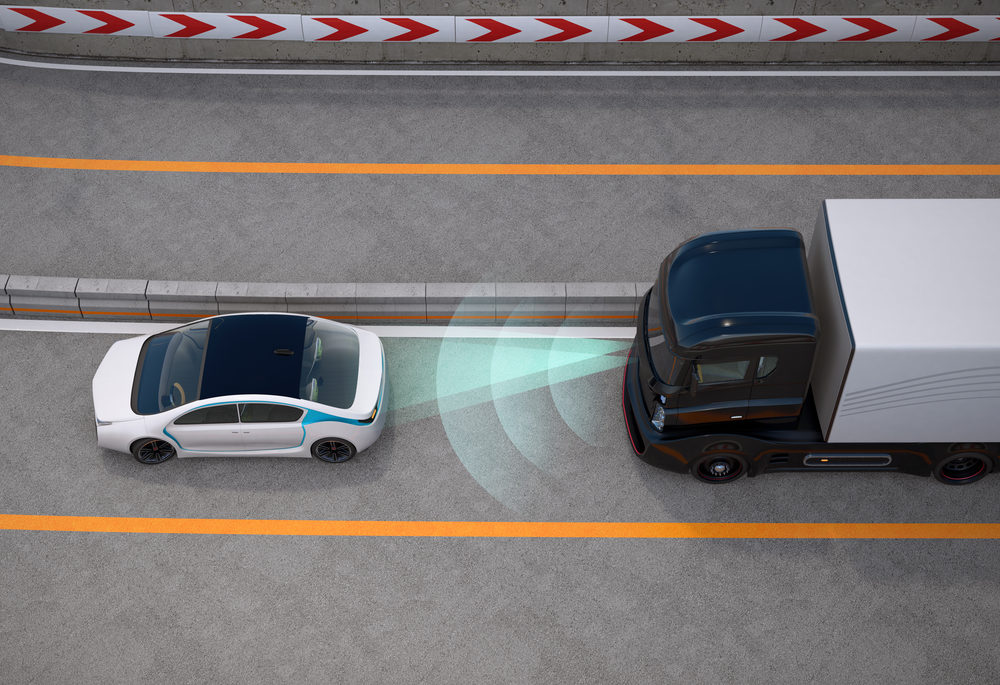
Perhaps you’ve had this fear. You are driving on a highway. You look in the rearview mirror, and a large truck, weighing several tons more than your car, is speeding towards you. For a minute, you panic, envisioning the truck plowing into you.
If statistics are any indication, your fear is valid. According to the Insurance Institute for Highway Safety (IIHS), U.S. crashes involving large trucks have risen by nearly a third in recent years. In 2018, figures showed that large truck crashes killed 4,136 individuals.
The good news is there may be a way to reduce these deadly accidents. A new study by the IIHS has found that outfitting large trucks with high-tech, front crash prevention systems could avert two out of five rear-end truck collisions. Front crash prevention systems use cameras, radar or other sensors to monitor the roadway ahead. These systems include forward collision warning (FCW), designed to alert the driver to obstacles in the roadway, and automatic emergency braking systems (AEB), which also detect nearby vehicles, but goes a step further by automatically applying the brakes.
The IIHS gathered data from 62 transport companies operating trucks and tractor-trailers weighing more than 30,000 pounds. With help from SmartDrive Systems, a video-based safety program for commercial truck fleets, the firm reviewed 2,000 crashes between 2017 and 2019.
Led by Eric Teoh, director of statistical services for IIHS, researchers found rear-end crashes in trucks equipped with FCW were reduced by 44 percent and trucks with AEB, 41 percent. Further, on trucks where the technology was on board, but the crash could not be held off, the truck’s speed was lessened by 50 percent, significantly reducing damage to the vehicles involved.
When reporting on the study on the IIHS website, Teoh stressed the results of his research should influence both drivers’ and truck companies’ decisions when considering a new purchase. “That’s important information for trucking companies and drivers who are weighing the costs and benefits of these options on their next vehicles,” he said.
In the U.S., neither large trucks nor passenger-vehicle manufacturers are required to equip vehicles with any kind of front crash prevention. However, that may change. In 2019, the Safe Roads Act was introduced to the House and Senate, which would require AEB systems in commercial motor vehicles. The European Union has required it on all new large trucks since 2013.
And even without being required to do so, 20 automakers have voluntarily committed to adding AEB systems as standard equipment on new passenger vehicles by September 1, 2022. Some are even ahead of schedule.
If you or someone you know has been injured due to a truck accident, contact Leizerman & Young for a free consultation. Our firm has extensive experience in truck accident litigation and is compassionate about advocating for truck safety initiatives. We are here to help truck accident victims determine what to do next and their possible legal options.

Michael Leizerman is a truck accident attorney specializing in catastrophic multi-axle collisions. He understands all facets of truck accident litigation; including federal regulations, drug and alcohol testing and hours of service requirements. He has authored a treatise entitled Litigating Truck Accident Cases and often educates other attorneys on trucking laws and regulations. You can learn more about Leizerman & Young by visiting their website, www.truckaccidents.com.













Comments for this article are closed.